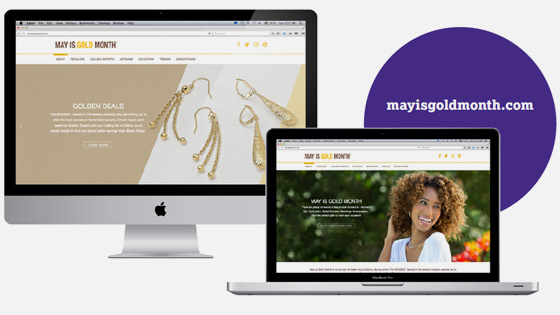But the US gold jewellery market used to be a lot bigger. Demand peaked at 389t in 2001 and, in value terms, consumption has barely changed since 1995, with price increases just about offsetting volume declines. Considering the tremendous growth in US retail spending over the same period, gold jewellery has been a serious underperformer.
US gold jewellery - an evolving industry
Mark Hanna
Chief Marketing Officer Richline Group, Inc.19 September, 2017
The US gold jewellery industry is both sizeable and globally significant. But it faces a range of challenges. Mark Hanna, chief marketing officer at Berkshire Hathaway company Richline Group, the leading jewellery manufacturer in the US, believes the industry can flourish, if it adopts certain key initiatives.
US gold jewellery - an evolving industry - Chart 5 Gold jewellery exports to the US
Chart 5: Gold jewellery exports to the US have grown 30% since 2013
Source: Metals Focus
Data as of
Consumers feel the pinch
Income growth plays an important role in gold demand. In the US, gold jewellery demand was steady while the economy was strong, unemployment was low and incomes grew swiftly. From 1995-2006 the US economy grew at an average rate of 3.3%, unemployment floated around its long run average of 5%, and consumer confidence was buoyant. Gold jewellery demand was robust, averaging around 345 tonnes a year.
But storm clouds were brewing. Households were steadily racking up debt and total outstanding liabilities shot up from almost US$5 trillion in 1995 to over US$14 trillion in 2007.
What happened next is well documented. Lehman Brothers failed, money-market funds went bust, and the biggest financial and economic crisis since the Great Depression wreaked havoc on Main Street. Within 12 months unemployment doubled, consumer confidence fell to an all-time low and households went on to endure years of anaemic wage growth.
At the same time, the gold price rose, soaring 172% between 2007 and 2012. Consumers tightened their purse strings, and retailers adapted their product offering, often replacing gold jewellery with cheaper alternatives.
Technology products have become must-have items and the impact on consumer spending has been dramatic.
Gold faces fierce competition
As expenditure fell, competition rose. Diamond-set jewellery was the key competitor, followed by silver, with platinum a distant third. Creative marketing campaigns were highly effective at gaining market share, especially within the diamond category.
The threat to gold jewellery, however, is broader than just the fine jewellery category. Technology products have become must-have items and the impact on consumer spending has been dramatic. According to market research firm Euromonitor, expenditure on luxury electronic goods – particularly smartphones and tablets – grew four times more quickly than spending in the luxury jewellery category between 2004 and 2013.
Retailers struggle to adapt to the online revolution
Jewellery retailers have also struggled to adapt to the online retailing revolution. To some extent, this is understandable. There is a strong emotional connection with jewellery purchases and they are often high-value transactions, so the ability to touch and feel a ring, necklace or pair of earrings can be important for customers.
But the industry may be over-dependent on in-store purchases. In a survey conducted by the World Gold Council in 2016, 47% of watches were bought online, compared to just 24% of gold jewellery purchases.
As online retailing expands, US department stores and retailers are feeling the strain, with large-scale closures reported by Macy’s, JC Penny, Sears and Kmart amongst others. Jewellery businesses are also under pressure. According to the Jewelers Board of Trade, 1,564 jewellery businesses ceased operations in 2016 out of 27,706 in total. Put simply, with such a high proportion of gold jewellery sales taking place in store, fewer stores are likely to result in fewer jewellery purchases, unless the online offering can be improved.
And retailers need to engage better with millennials
The fine jewellery industry also faces the challenge of engaging with the next generation of customers. According to the World Gold Council, when offered US$1,000, only 24% of US consumers between 18–25 would buy fine jewellery, compared to 47% of those aged over 34. Luxury fashion and technology seem to do a far better job at engaging with millennials.
Luxury fashion and technology seem to do a far better job at engaging with millennials.
But there is a brighter outlook, if the opportunities are seized

Clearly the industry faces a number of challenges. But the outlook is not entirely bleak. There are encouraging signs of change and if the industry adapts, it can grow. I believe there are three key areas of focus.
Improve branding and tell a compelling story
The US gold jewellery market is largely unbranded, in contrast with the diamond industry, which has created an emotive brand through its Forevermark campaign. Brands can build meaningful connections with customers and help tell stories which resonate with a target audience. International and luxury brands, department stores and even artisanal brands can all play a key role in promoting gold jewellery.
Branding can also help to engage with millennials, a fickle and trend-conscious cohort that many industries find it difficult to attract. Effective branding can support product differentiation through, for example, responsible sourcing and community development. In a recent report, the Jewelry Board of Trade highlighted transparency and provenance as being marketing opportunities which brands can exploit. Personally, I believe this can be a big opportunity for gold jewellery. If the industry effectively manages the image of gold from “mine to market”, it can grasp the marketing opportunities and fuel future growth in this category.
Enhancing the retail experience
Physical jewellery shops face challenges, clearly, but they are not insurmountable. While online is important, people still seek out ideas and inspiration in stores. Retailers need to provide great customer service in an engaging atmosphere, encouraging potential customers to play and experiment with products. Customers increasingly expect retailers to remember what they buy, and want to be able to personalise the jewellery they wear. The effective use of customer data can help achieve this.
Looking to the future, millennials are increasingly sourcing luxury fashion ideas and inspiration from online blogs. Jewellery retailers can embrace this to good effect and ensure that gold jewellery is visible and engaging on a range of social channels.
More sophisticated – and perhaps collaborative – marketing campaigns
For gold jewellery to prosper it seems clear that additional marketing and brand building is required. With increasing proportions of spending taking place online, and very likely less shopping at fewer outlets, online sales will have to become more important for gold jewellery to prosper. It seems obvious that trusted brands – those of retailers as well as designers / manufacturers – will be easier to sell online.
Successful competition from other luxury goods categories is partly attributed to advertising and marketing. For gold to thrive, improved industry-wide collaboration regarding campaigns and advertising expenditure would be a positive step forward. We already have some success in this space. MayIsGoldMonth.com is a great initiative that promotes and educates potential gold customers. The question is: what more can the industry do?
Finally, perhaps the jewellery industry should not be too hard on itself. As the statistics show, gold use in US jewellery has stabilised over the past seven years despite economic and structural challenges. This stability suggests that the US retail population still cares deeply for gold and there are clear opportunities for the US gold jewellery sector to innovate and prosper in the future.

